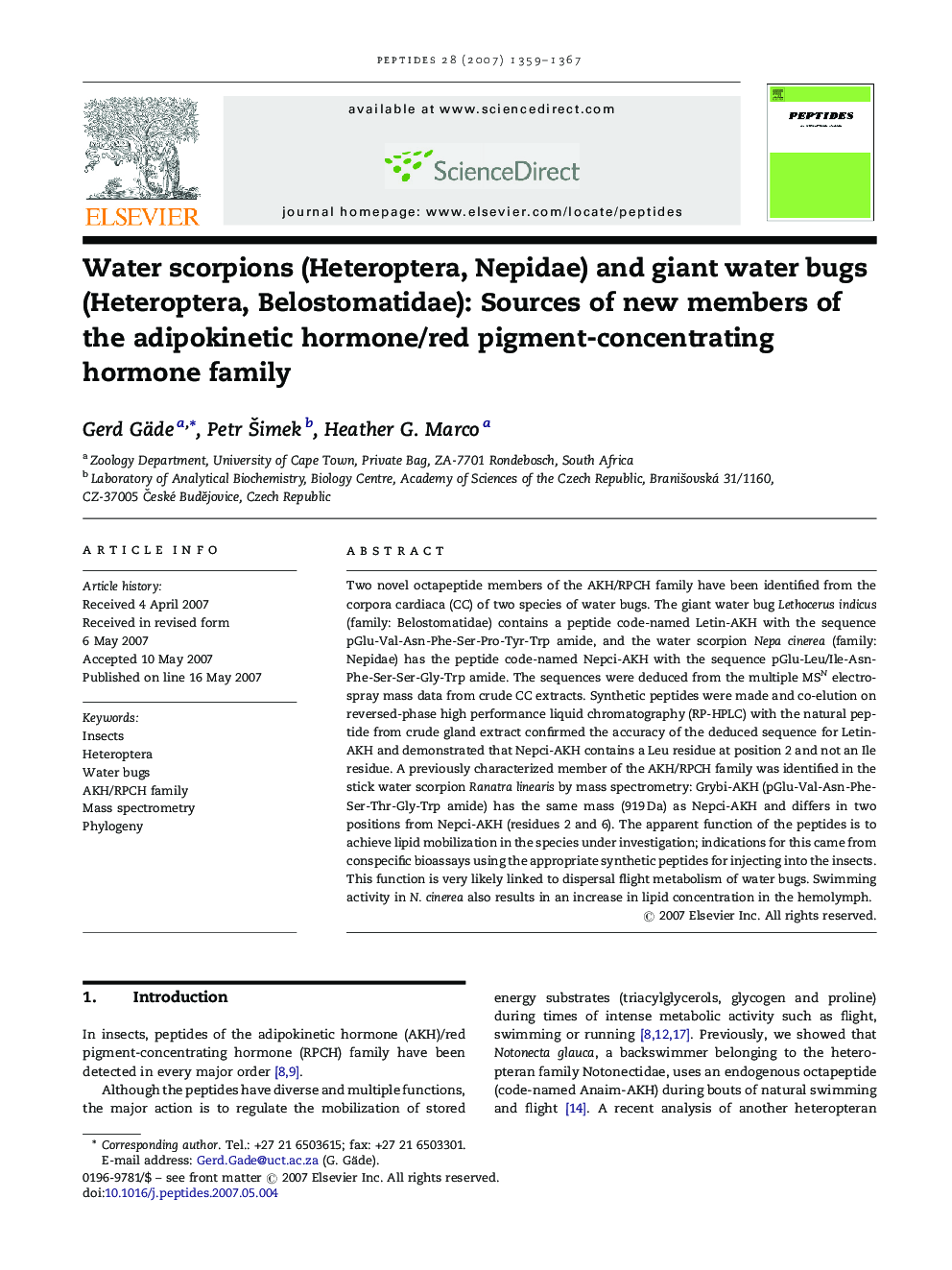| Article ID | Journal | Published Year | Pages | File Type |
|---|---|---|---|---|
| 2008012 | Peptides | 2007 | 9 Pages |
Two novel octapeptide members of the AKH/RPCH family have been identified from the corpora cardiaca (CC) of two species of water bugs. The giant water bug Lethocerus indicus (family: Belostomatidae) contains a peptide code-named Letin-AKH with the sequence pGlu-Val-Asn-Phe-Ser-Pro-Tyr-Trp amide, and the water scorpion Nepa cinerea (family: Nepidae) has the peptide code-named Nepci-AKH with the sequence pGlu-Leu/Ile-Asn-Phe-Ser-Ser-Gly-Trp amide. The sequences were deduced from the multiple MSN electrospray mass data from crude CC extracts. Synthetic peptides were made and co-elution on reversed-phase high performance liquid chromatography (RP-HPLC) with the natural peptide from crude gland extract confirmed the accuracy of the deduced sequence for Letin-AKH and demonstrated that Nepci-AKH contains a Leu residue at position 2 and not an Ile residue. A previously characterized member of the AKH/RPCH family was identified in the stick water scorpion Ranatra linearis by mass spectrometry: Grybi-AKH (pGlu-Val-Asn-Phe-Ser-Thr-Gly-Trp amide) has the same mass (919 Da) as Nepci-AKH and differs in two positions from Nepci-AKH (residues 2 and 6). The apparent function of the peptides is to achieve lipid mobilization in the species under investigation; indications for this came from conspecific bioassays using the appropriate synthetic peptides for injecting into the insects. This function is very likely linked to dispersal flight metabolism of water bugs. Swimming activity in N. cinerea also results in an increase in lipid concentration in the hemolymph.
